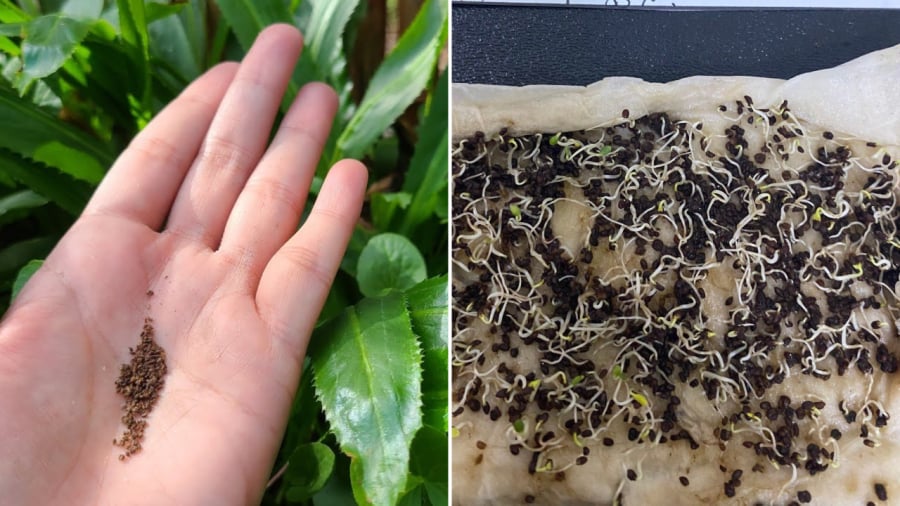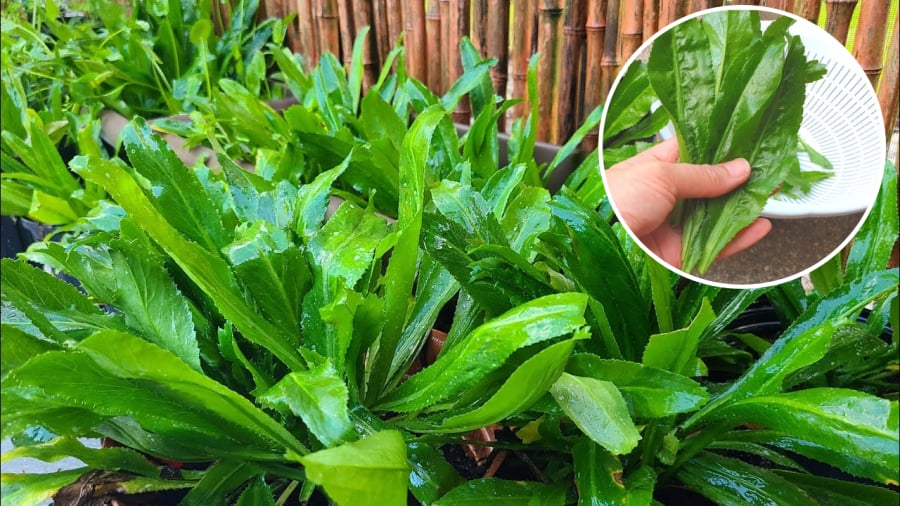Cilantro, also known as saw-leaf herb, is a popular aromatic herb used extensively in Vietnamese cuisine. In traditional Chinese medicine, cilantro is believed to possess cooling and detoxifying properties, aiding in digestion. Additionally, this herb is rich in antioxidants, which boost immunity, promote overall health, and prevent chronic diseases.
Preparing Cilantro Seeds
You can easily grow cilantro from seeds. Opt for high-quality seeds, free from pests, and store them in a dry place. These seeds are readily available at seed shops, agricultural stores, or online marketplaces.

Cilantro seeds can be sown to grow this flavorful herb.
Soil for Cilantro
Cilantro thrives in well-drained, nutrient-rich, and loose soil. You can prepare a suitable mix by combining garden soil with organic fertilizers such as worm castings, chicken manure, or well-rotted cow dung. Alternatively, you can purchase ready-made potting soil from gardening stores.
For planting, use a pot or container with drainage holes to prevent root rot.
Planting Cilantro and Post-Planting Care
Once you’ve selected your seeds, soak them in warm water (30-40°C) for 4-5 hours to stimulate germination. Remove the seeds from the water and wrap them in a damp cloth for 1-2 days until the seeds begin to crack.
When the seeds have cracked, you can directly sow them into the soil, spacing them about 4-10 cm apart to allow room for growth. Cover the seeds with a thin layer of soil and water gently to maintain moisture. If you prefer, you can also start the seeds in a seedling tray and then transplant the seedlings into a pot once they’ve grown.
Initially, maintain moist soil by watering regularly but sparingly to avoid waterlogging. Place the pot in a sunny spot, and within 7-10 days, the seeds will sprout.
Cilantro is relatively resistant to pests and diseases, so its care is straightforward. Simply water the plant and occasionally provide organic fertilizer. Cilantro thrives in moist conditions, so water regularly but not excessively. Observe the soil and adjust your watering accordingly. Water early in the morning or late in the afternoon to avoid causing heat stress to the plant.
Fertilize the plant every 15-20 days with organic matter such as worm castings or well-rotted vegetable peel compost. Remove weeds regularly, if any.
If you spot any leaf-eating insects, remove the affected leaves immediately. To get rid of aphids, if present, spray the plant with soapy water.

Growing cilantro at home is simple and yields quick harvests.
In about 30 days, your cilantro plant will be ready for its first harvest. Pick the larger outer leaves, allowing the inner leaves to continue growing. After harvesting, you can spray the plant with antifungal and antibacterial solutions and provide additional fertilizer to promote vigorous growth.
For older cilantro plants, you can allow them to flower and produce seeds. Collect these seeds for future plantings. When the plant’s growth slows and the leaves become smaller, uproot the plant and replace it with a new one.






























